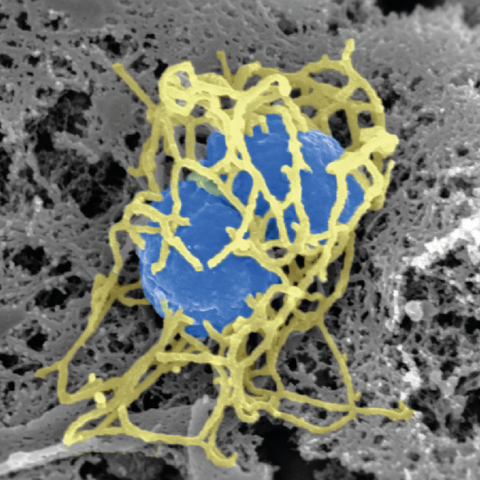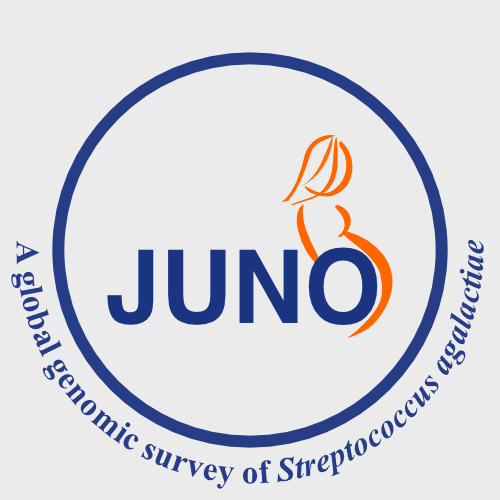Genomics of Pneumonia, Meningitis and Neonatal Sepsis
Parasites and Microbes
By studying the bacteria with high resolution genetic data we aim to understand how bacterial pathogens evolve to evade clinical intervention strategies (for example, antibiotics and vaccines), how they transmit from person to person and how they spread from country to country. Ultimately we hope to generate new knowledge that can be used to improve strategies for infection control and disease prevention.
Related Sanger Institute blog

Bacterial genomics and pathogen surveillance -interview with Stephen Bentley
Our research
Infectious disease is one of the leading causes of mortality in children under five in low- and middle-income countries*. Large-scale genome sequencing, open access data and increasing collaborative networks are enhancing our ability to tackle the challenges of infectious disease from a global standpoint. Through multiple large-scale projects, we aim to understand the evolution of bacterial pathogens associated with pneumonia, meningitis and neonatal sepsis providing global context with a focus on high disease burden in resource-poor settings.
We focus on the following priority pathogens:
Streptococcus pneumoniae
Streptococcus pneumoniae naturally colonises the nasopharynx of healthy individuals but can cause serious invasive diseases such as bacteremia and meningitis and is the leading cause of bacterial pneumonia.
Through the Global Pneumococcal Sequencing Project we have worked with partners from >50 countries to a develop a database of >25,000 genomes representing pneumococcal populations in >60 countries before and after the global rollout of pneumococcal conjugate vaccines.
Data from GPS is being used to identify future high-risk strains and to design future vaccine formulations that will reduce the burden of disease and antibiotic resistance.
Through collaborations with Paul Turner and colleagues in South East Asia and Felix Dube and colleagues in South Africa we are using genomics to study microevolution during carriage and transmission in densely sampled human populations.
We hope these studies will uncover the selective processes at play, particularly during disease episodes and antibiotic treatment.
Streptococcus agalactiae
Streptococcus agalactiae (aka Group B Streptococcus or GBS) is an opportunistic pathogen and a major cause of neonatal invasive disease, with a particular impact on infant mortality in low and middle-income countries (LMICs), where disease prevention strategies are less often implemented or have low coverage.
Through the JUNO project are conducting a global genomic survey of Group B Streptococcus isolates from across a broad geographical and temporal span with the central aim of informing vaccine development and other disease intervention strategies.
The project focuses on three key areas of Group B Streptococcus biology:
- global genomic diversity
- genetic associations with the disease
- transmission.
Neisseria meningitidis

Neisseria meningitidis is found exclusively in humans and is a leading cause of bacterial meningitis and septicaemia. Meningococcal infections are difficult to treat and have a high case fatality rate but, as with the pneumococcus, colonisation is normally asymptomatic.
The meningococcus has a substantial disease burden in the meningitis belt of sub-Saharan Africa, where the incidence of infection and disease are much higher than other regions of the world.
We work with numerous collaborators to study several population genomic datasets of N. meningitidis including a large carriage collection from Burkina Faso (with Dominique Caugant), the MenAfriCar meningitis belt carriage surveillance project, and a global collection of carriage and disease isolates with considerable temporal spread.
Through these studies we hope to understand the evolution that leads to meningococcal disease epidemics in the Meningitis Belt and help to inform future vaccine intervention strategies worldwide.
Core team

Dr Dorota Jamrozy
Principal Bioinformatician

Dr Stephanie Wai-U Lo
Senior Staff Scientist

Neil MacAlasdair
PhD Student
Previous core team members

Dr Christine J Boinett
Principal Bioinformatician

Dr Claire Chewapreecha
Fomer International Fellow at the Sanger Institute, and Wellcome International Intermediate Fellow at MORU Mahidol Oxford Tropical Medicine Research Unit

John Lees
Former PhD Student at the Sanger Institute
The following were also members of this team:
| Alison Maguire | |
| Jyothish Bhai | |
| Ebrima Bojang | |
| Feyruz Yalcin | |
| Nicholas Croucher | |
| Gareth Peat |
Associated research
Related groups
Partners
We work with the following groups


